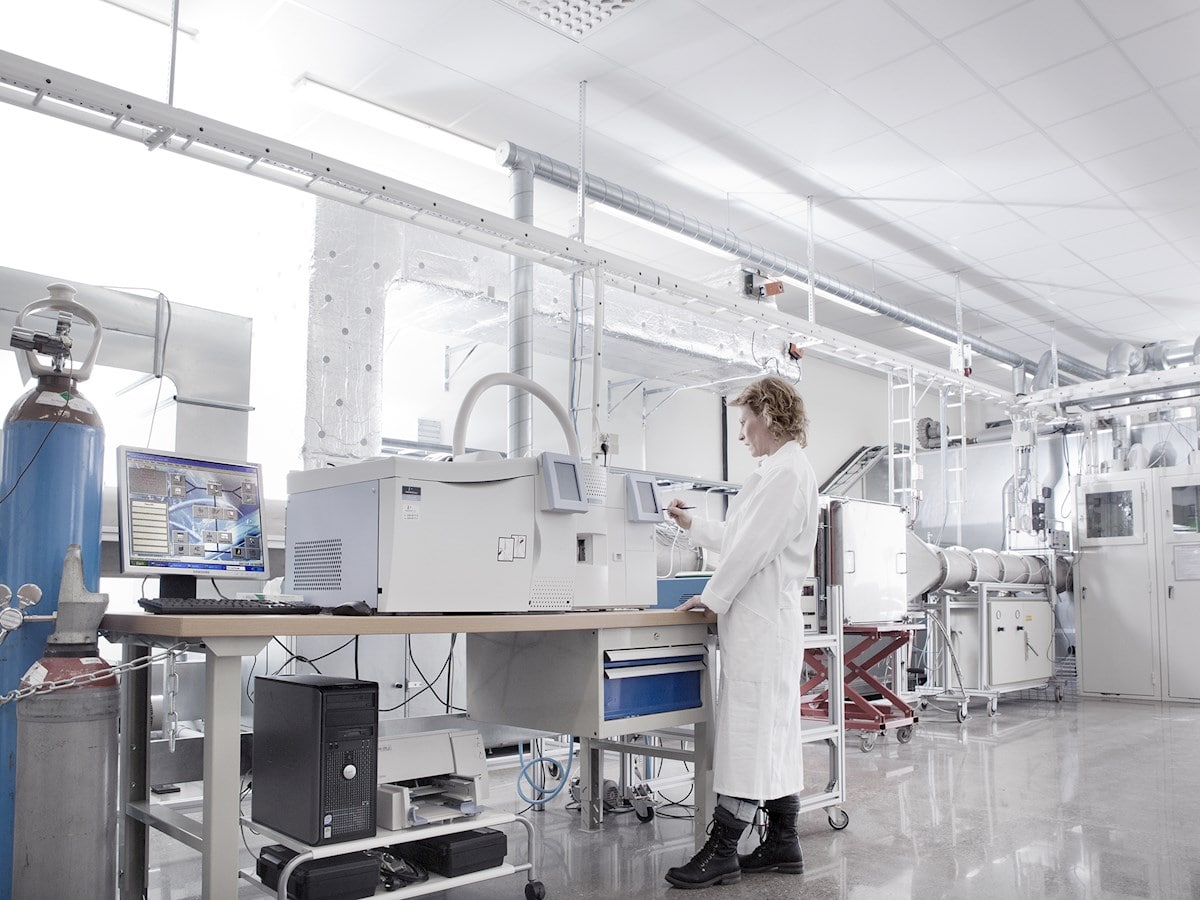
การวิจัยและพัฒนาส่งผลให้เกิดนวัตกรรมขั้นสูง - ทีมงานของ แคมฟิล มุ่งพัฒนาไปที่การออกแบบผลิตภัณฑ์ที่มีประสิทธิภาพและน่าเชื่อถือและมีการพัฒนาให้ประหยัดพลังงานและลดการปล่อยคาร์บอน สิ่งสำคัญที่ แคมฟิลต้องการเสนอคือ การพัฒนาและนวัตกรรมทั้งหมด คำนึงถึงการรักษาสภาพแวดล้อมและการเพิ่มมูลค่าของผลิตภัณ์ในการพัฒนาอย่างยั่งยืน
1. ช่วยลดต้นทุนในธุรกิจ (TCO)
2. เพิ่มความเชื่อมั่นในการมอบอากาศบริสุทธิ์
อะไรคือการลดต้นทุน (TCO) ?
การแบ่งค่าใช้จ่ายตลอดิายุการใช้งานผลิตภัณฑ์กรองอากาศ:
• 70% ในส่วนของพลังงาน
• 15% ราคาซื้อผลิตภัณฑ์
• 13% ต้นทุนการเปลี่ยนไส้กรองหรือแผ่นกรอง และ 2% ค่าแรงในการเปลี่ยน
เราจึงมีความมุ่งมั่นที่จะพัฒนาในการลดใช้พลังงานรวมทั้งง่ายต่อการใช้งานผลิตภัณฑ์
Camfil’s advanced approach in developing new products or enhancements are defined by two perspectives: the customer perspective and product life cycle perspective.
The lifecycle perspective is especially helpful when trying to identify the potential to reduce the product’s environmental footprint. Early in the development phase of the product’s life, Camfil’s team typically evaluates the choice of raw materials, means of manufacturing these materials, and the effects of transportation and logistics. In the manufacturing phase, internal processes are evaluated in terms of energy use, complimentary raw materials, ergonomics & work environment, internal waste treatment, and recycling. Further along in the chain the transport distances, optimal location for production, volume and weight efficiencies in packaging, and mode of transport to customers and local warehouses are considered.
In the use phase, most effort goes into minimizing the overall energy consumption and ensuring health and safety for the maintenance staff who often handles the used contaminated air filters. Finally, at the end of filter life, the focus is on minimizing general waste, whenever possible ensuring that the waste can be easily separated into recyclable or reusable fractions. To ensure that Camfil optimizes the environmental choices and maintains a holistic view of sustainability during product development, state-of-the-art life cycle analysis (LCA) simulation tools are used. These tools enable the team to model the entire products life cycle from cradle to grave, including all life cycle phases and components of the product. The modelling tools translate the environmental impact of given choices into a common unit, CO2 equivalents. This is highly effective in judging what the impact of, for example, a certain choice of new filter media is on the overall environmental footprint of the product.
Camfil’s use of modern LCA modelling software now enables a more rapid, accurate, and complete modelling of the environmental impact of our development choices in all applications.
Furthermore, Camfil is helping to develop industry standards
Camfil actively participates in standards taskforce/panels to ensure that a good balance is achieved between filtration efficiency and energy efficiency in general ventilation systems. Industry standards and governmental regulations preserve this balance and help drive the development of innovative solutions that simultaneously increase both these elements to safeguard people’s health and conserve energy.